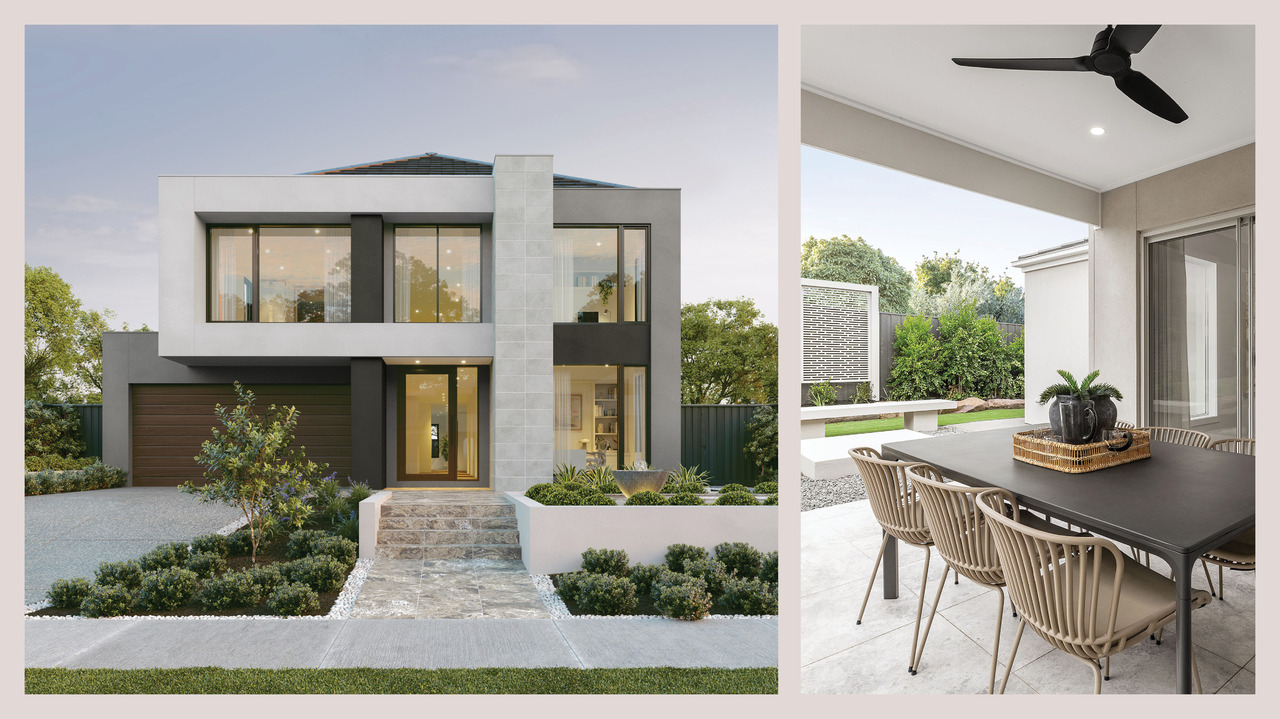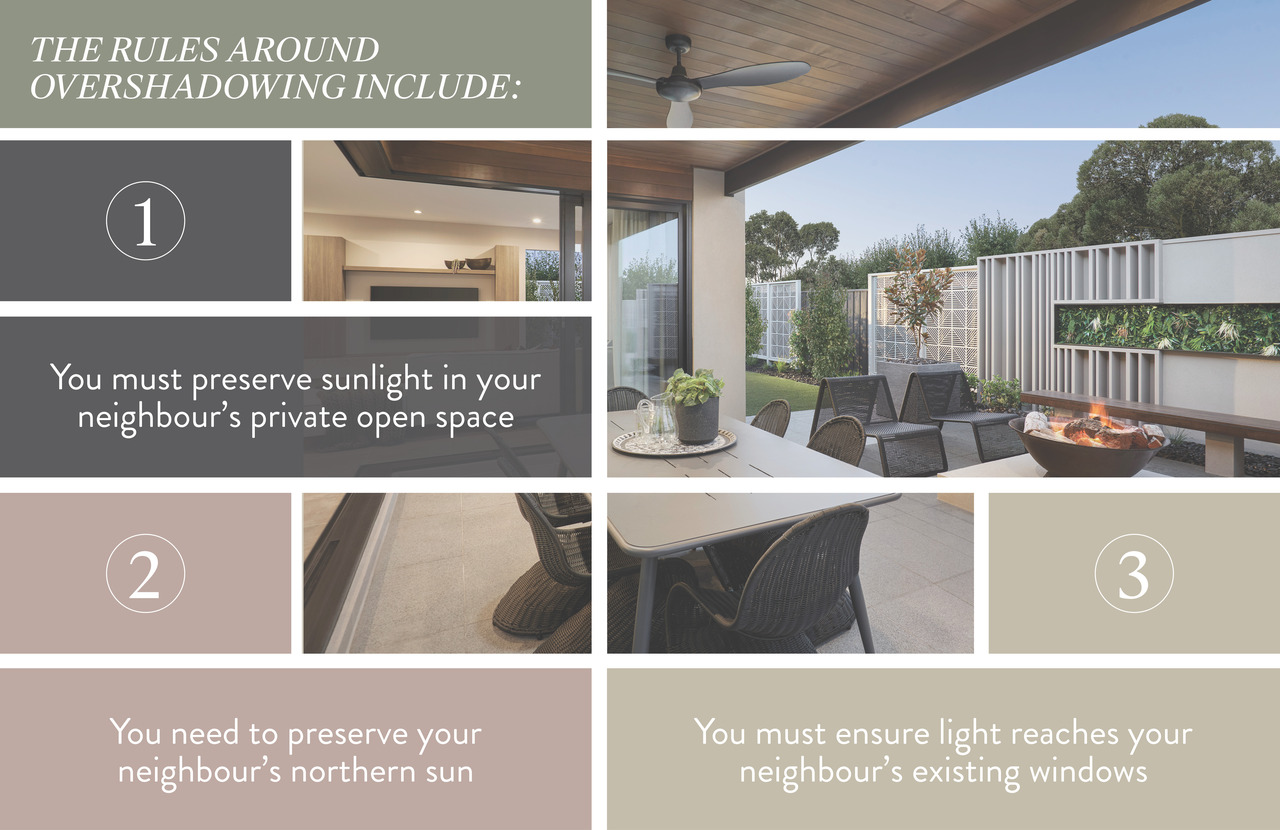Top building terms every new buyer should know
by Rod Tabak, General Manager - Construction

Overshadowing is one of those terms you hear a lot when you’re planning your new home. But what does it mean, and why does it matter? Here, we explain all.
Natural light is key to creating a happy and functional home that feels good to be in. To prevent your new home casting your neighbouring property into darkness (or them into yours, if you built first), the Victorian Residential Development Code (Victorian ResCode) and your local council have strict rules regarding overshadowing, which every new home must adhere to.
Read on to learn more about overshadowing regulations in Victoria, and how they can affect the design and position of your new home on your block.
What is overshadowing?
Overshadowing occurs when a house blocks sunlight from entering the neighbour’s habitable living spaces, private outdoor space, solar panels, windows or glazed surfaces beyond an allowed limit. This can be due to a number of factors, including the height or placement of the home on the block, fencing or trees.
Why does it matter?
Blocking natural light into your neighbour’s property not only affects their enjoyment of their home, but makes it less energy-efficient. When a home has less access to sunlight, the occupants will be forced to be more reliant on artificial lighting and heating, which drives up energy bills and greenhouse gas emissions.
Blocking sunlight can also impact the value of your neighbour’s property and their future resale potential. This is because properties with ample natural light are generally more desirable to buyers and command a higher price.

The rules around overshadowing
To prevent overshadowing from occurring, Victorian ResCode policy has strict regulations about where, and how far, you can position your home on your block in relation to existing neighbouring properties – these are your setback requirements.
Local council can also restrict the number of double-storey homes built in a row, often stipulating a single then a double-storey home to minimise overshadowing.
A few examples of ResCode overshadowing and setback regulations include:
- You must preserve sunlight in your neighbour’s private open space, allowing for at least five hours of light between 9am and 3pm on the vernal (spring) equinox.
- You need to preserve your neighbour’s northern sun, and if their window is within three metres of the boundary, you need to set back your house one metre plus 0.6 metres for every metre above 3.6 metres but below 6.9 metres.
- You must ensure light reaches your neighbour’s existing windows, providing a minimum area of three metres square, with one metre clear to the sky around the window.

Where to find the rules
Carlisle's expert team are fully versed in all aspects of Victorian ResCode policy, so if you have any questions regarding overshadowing or setbacks, you can speak to your Carlisle Client Liaison Executive.
You can also find more about the Victorian ResCode policy here. Or contact your local council for further information.
So, how will overshadowing affect your new dream home?
Every Carlisle home has been carefully designed to maximise natural light, energy efficiency and ventilation so it’s a joy to be in and efficient to run. Carlisle's expert team will also help you choose the perfect design to suit your block and orientation, prevent overshadowing and work seamlessly with any neighbouring properties.
If you’re concerned that the residential overshadowing rules in Victoria may mean having to compromise on the house design you had your heart set on, the solution is to act early. “To have the freedom to build what you want, you need to be the first person among your neighbours to build, which means getting your builder and house design locked in early,” says Peter Fowler, Production Drafting Manager at Carlisle Homes.
“Get to site first, before your neighbours have started building, and you won’t have any setback or overshadowing issues to contend with. This means you’re less likely to have to compromise on issues like the size or width of your house, single versus double storey, and where your house is positioned on your block,” he says.
Learn more about why it pays to act fast, before your land titles, in this article.
Is your goal for 2025 to build your dream home? Pop in to one of Carlisle's 80+ display homes, located throughout Melbourne and Geelong, and explore the type of house you could soon be calling home, and take the opportunity to chat about your plans.

Rod Tabak
General Manager - Construction
With over 35 years in the building industry, Rod brings his extensive experience in construction, quality control and innovation to the business. Rod excels in optimising processes, establishing strong industry relationships and delivering reliable outcomes.
Read more